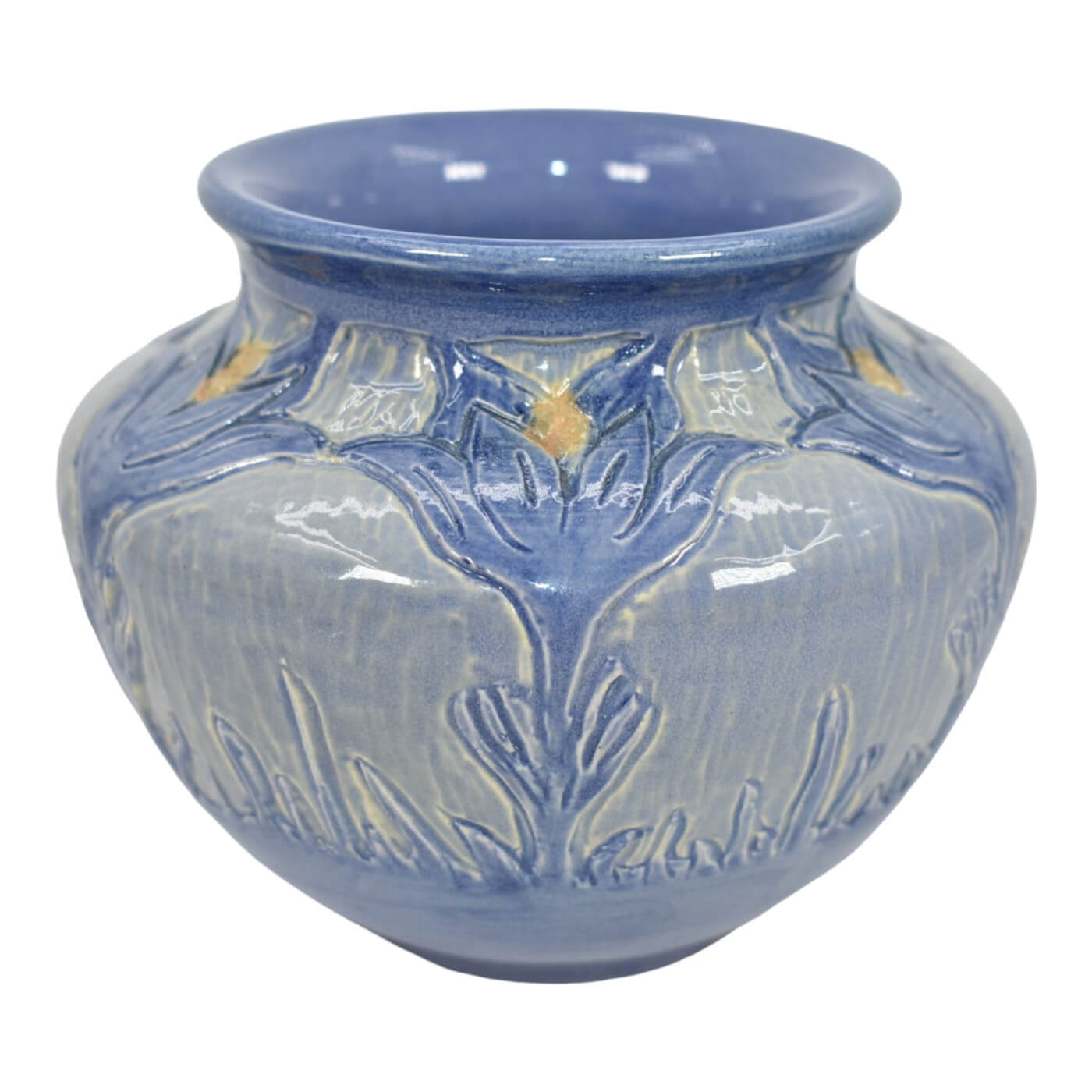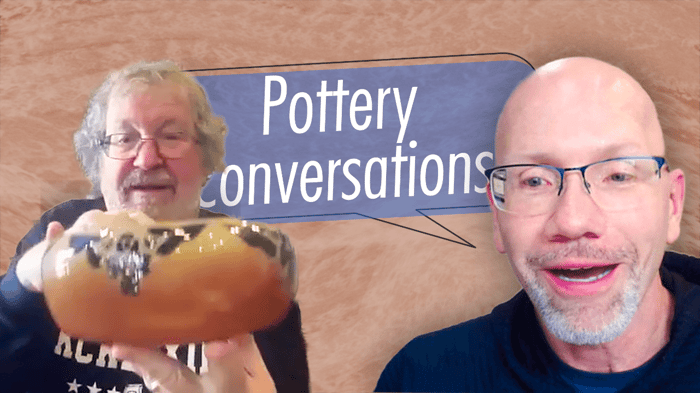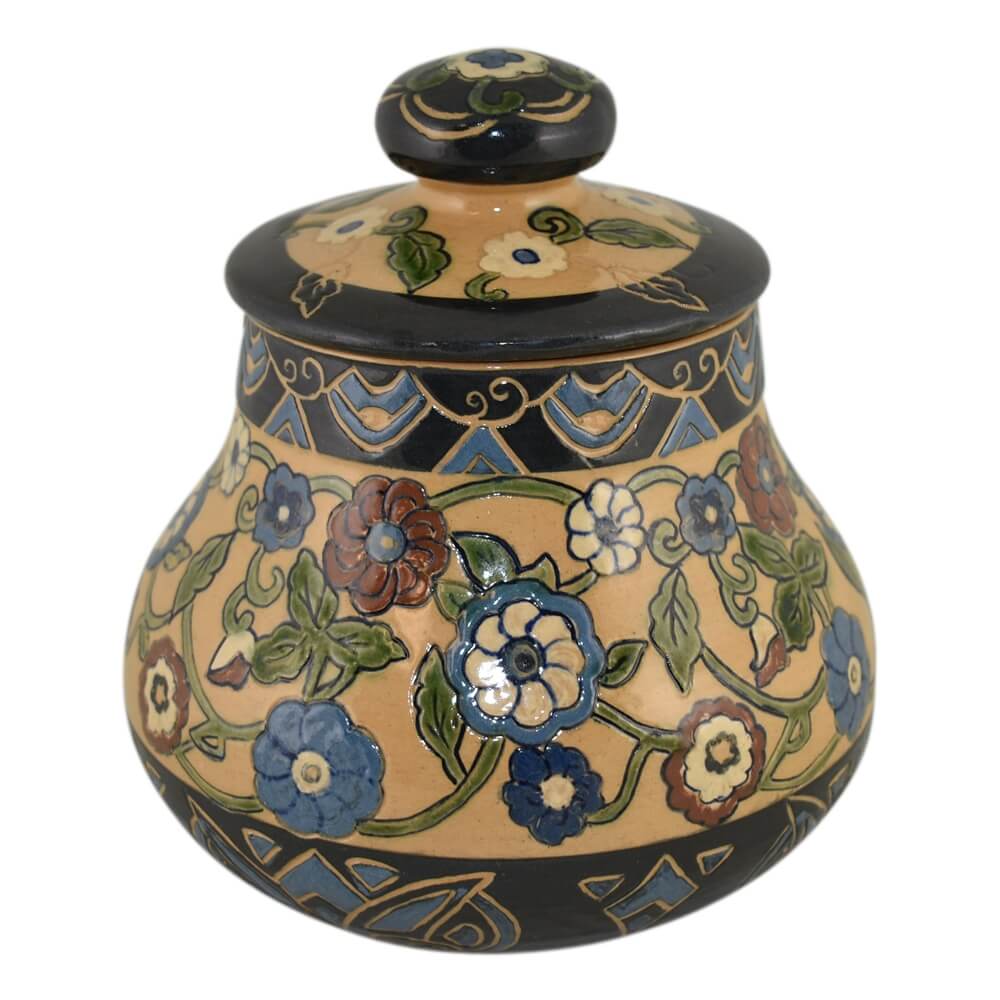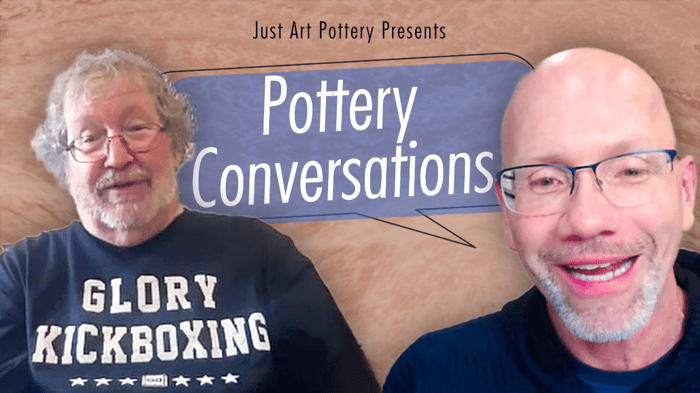Welcome to Pottery Conversations hosted by JustArtPottery.com Owner, Greg Myroth, where we delve into the world of vintage and collectible art pottery! From renowned experts and authors to passionate collectors and seasoned dealers, we'll bring you insightful conversations that celebrate the beauty and craftsmanship of American art pottery and European ceramics. Whether you're a seasoned collector or just beginning your journey into the world of art pottery, there's something for everyone on Pottery Conversations. Subscribe and stay tuned for uploads and highlights from each episode.
University of North Dakota (UND) Pottery - Pottery Conversations - Episode 2
Welcome to the second episode of Pottery Conversations! Today, we continue talking with University of North Dakota Pottery (UND Pottery) expert Tony Olsen about UND's typical bottom marks, different ways of making art pottery, bentonite piece rarity, and more!
The episode explores the markings and date codes found on University of North Dakota (UND) pottery pieces, such as The circular UND stamp that was used from around 1913 to 1963. Prior to that, pieces were marked with a script "UND" in ink. We also discuss marks like "T672" to indicate a trial glaze, and "HFD" which stands for artist Hildegard Fried Drebbs. Other markings include date codes help collectors determine the year a piece was produced.
Finally, the speakers discuss a talented North Dakota potter known for high-quality, freehand pottery with beautiful forms, glazes, and near-porcelain quality, especially pre-1939 white clay pieces. They share insights into collecting and dealing pottery, including the joys and challenges of buying, selling, and appreciating these unique historical artifacts.
00:00 - Start
01:17 - Typical Bottom Marks
05:50 - Advice To Collectors
07:53 - What's Tony's Favorite Piece?
12:37 - Differences Between Hand Thrown, Coiled, and Molded UND Pottery
19:37 - Bentonite Rarity
25:46 - Good, Better, and Best UND Pottery
44:42 - Outro
SUBSCRIBE for more Pottery Conversations episodes and highlights: https://www.youtube.com/@justartpotte...
More Information and Links:
North Dakota School of Mines History, Marks, Artists
University of North Dakota UND Pottery Collection
Collector's Encyclopedia of the Dakota Potteries: Identification & Values
University of North Dakota Pottery: A History and Comparative Study
University of North Dakota Pottery Cable Year
Kovels' American Art Pottery: The Collector's Guide to Makers, Marks, and Factory Histories
Summary of Episode 2
In this episode, Greg and Tony discuss the various marks and date codes found on University of North Dakota (UND) pottery pieces. Tony explains that the most well-known mark is the circular UND stamp, which was used from around 1913 to 1963. Before that, UND pieces were marked with a script "UND" in ink.
Tony also discusses the meaning of other marks, such as "T672", which indicates a trial glaze, and "HFD", which stands for the artist Hildegard Fried Drebbs. They also explore the significance of date codes on UND pottery, which can help collectors determine the year a piece was produced. Overall, this conversation provides valuable insights for new collectors to better understand the history and markings of UND ceramics.
The speakers discuss the work of a talented North Dakota potter, whose high-quality, freehand pottery is highly sought after by collectors. The speaker highlights the beauty of the potter's form, glaze, and craftsmanship, noting that her pieces, especially the pre-1939 white clay ones, have a near-porcelain quality. Tony also shares his own experiences as a collector and dealer, discussing the joys and challenges of buying and selling pottery, including using pottery sales to support the family. Overall, the conversation provides insight into the artistry and value of this North Dakota potter's work.
The speakers discuss the experience of buying, selling, and collecting hand-thrown pottery pieces, particularly a valuable vase from North Dakota. Tony explains how he made a deal with a friend to have first dibs if the friend ever wanted to sell the vase, as he had done with another piece. The speakers highlight the differences between hand-thrown and molded pottery, noting the higher quality and craftsmanship of the hand-thrown pieces, especially those from the 1930s. They also share the joy of being able to appreciate and pass on these unique, historical artifacts, even if it means letting them go at times.
The speakers discuss the art of Bentonite pottery, highlighting the differences between hand-thrown, hand-built, and coiled pieces. They examine several examples, including a beautifully thrown vase by Cable with intricate decoration, and a coil pot by Madsen that shows the challenges in replicating the skill of the San Ildefonso Pueblo potters. The conversation emphasizes the importance of technique, attention to detail, and the unique styles and traditions of different Pueblo artists.
The speakers discuss the art of identifying quality pottery, using examples from their personal collections. They highlight the work of renowned potter Frida Louise Hammers, whose signature style and techniques can be distinguished from other artists. The speakers also admire a beautifully glazed vase from the University of North Dakota, praising the intricate craftsmanship and graduated colors. Throughout the conversation, they share their passion for collecting and appreciating the unique qualities of each piece.
The speakers discuss the nuances of good, better, and best when it comes to Newcomb College pottery. They note that just because a piece has the Newcomb stamp does not necessarily make it superior. The key is to look at the quality of the glaze, the craftsmanship, and the creativity of the design. The speakers highlight examples of Newcomb pieces that demonstrate varying levels of quality, with some production pieces being "good" but not necessarily "better" or "best." They also discuss how certain potters like Julia Madsen experimented with more avant-garde, modernist designs that pushed the boundaries of traditional Newcomb style, showcasing the creativity and diversity within the college's pottery program.
The conversation explores the diverse and impressive artistic talents of Julia Madsen, a renowned mid-century modern artist. Madsen's shows great versatility, showcasing her ability to create stunning pieces across various art movements, from Arts and Crafts to Modernism. They highlight her generosity in providing awards and recognition for women at the University of North Dakota, demonstrating her commitment to supporting her community. The Olsens also share their personal connections to Madsen's work, with one speaker's grandson receiving a cherished piece as his first UND collectible. Overall, the discussion celebrates Madsen's remarkable artistic legacy and her positive impact on those around her.
The speakers discuss a rare and valuable pottery piece from the University of North Dakota's collection, created in 1925 by a student who went "above and beyond" in their arts and crafts design. The speaker acquired the piece in 1997 on eBay for $800, describing it as a "lottery day" find. They also highlight another exceptional piece, a large molded and hand-decorated vase likely created by Margaret Cable, which features a beautiful Minnesota lake scene. The speakers emphasize the difficulty in achieving such high-quality glazing and craftsmanship, and note that these types of valuable pieces were often underappreciated at the time.
The speakers discuss the fascinating history and value of a student-made ceramic vase from 1927. Despite initial challenges in acquiring the piece, the speaker was able to track it down years later and purchase it, recognizing its exceptional craftsmanship and rarity. The conversation highlights the rich history and hidden gems that can be found in the world of North Dakota art and ceramics, with the speakers sharing their passion for uncovering these unique and valuable pieces.








